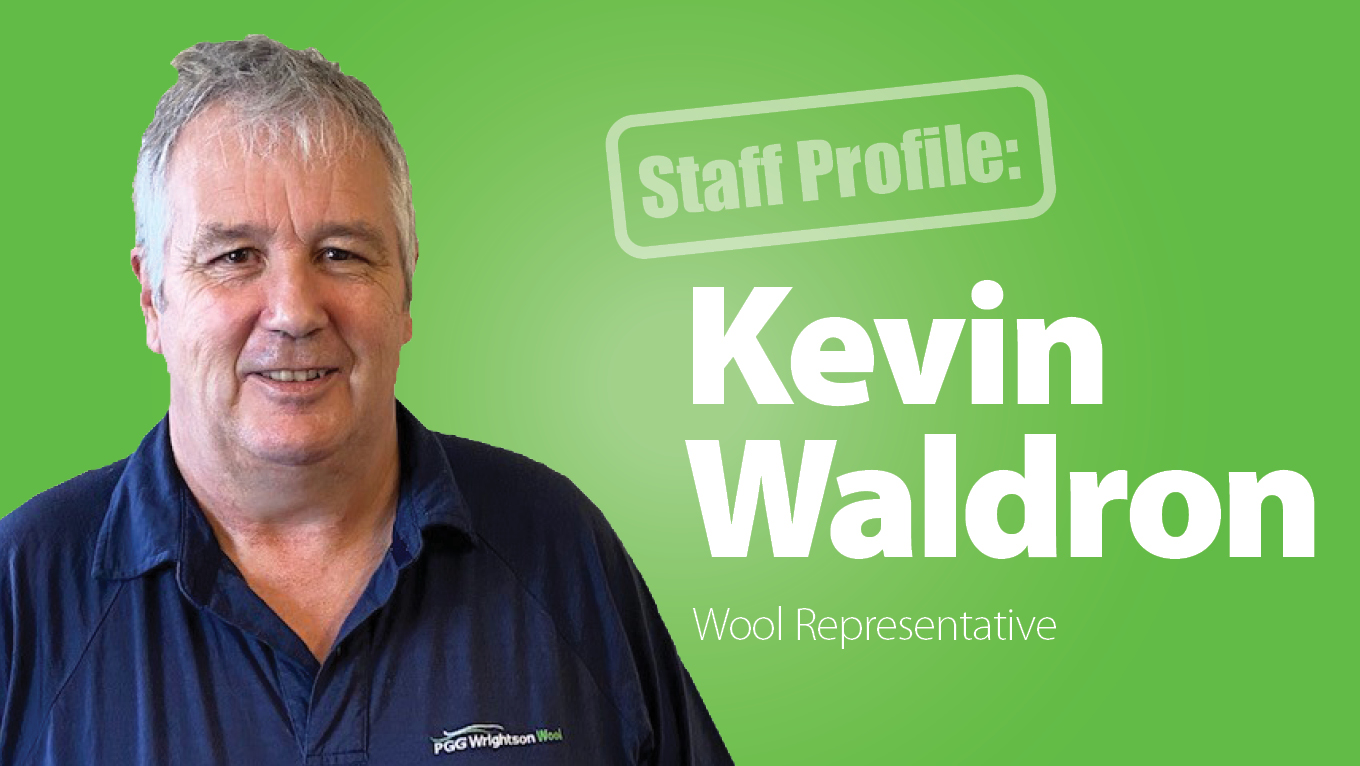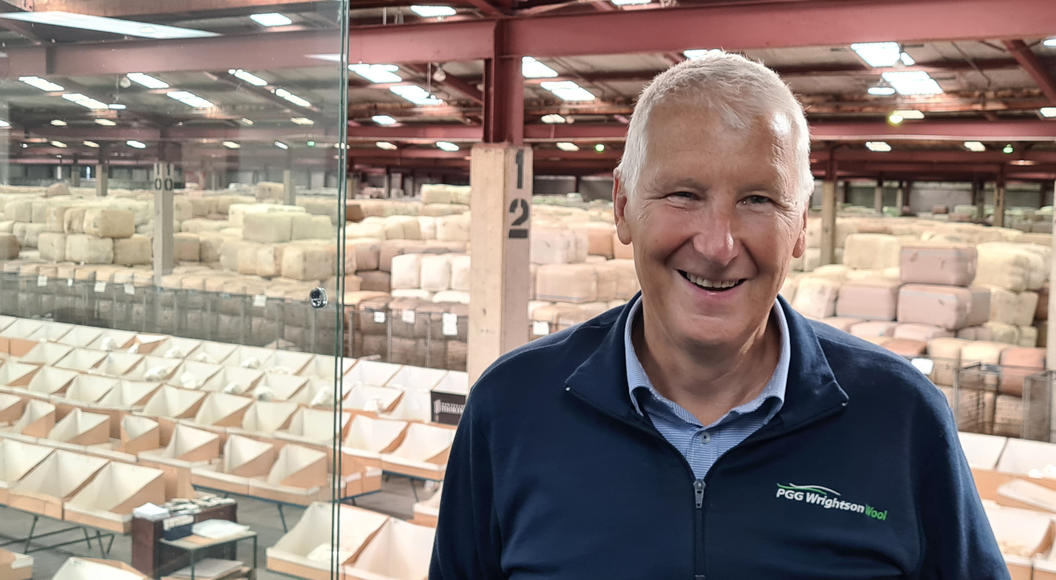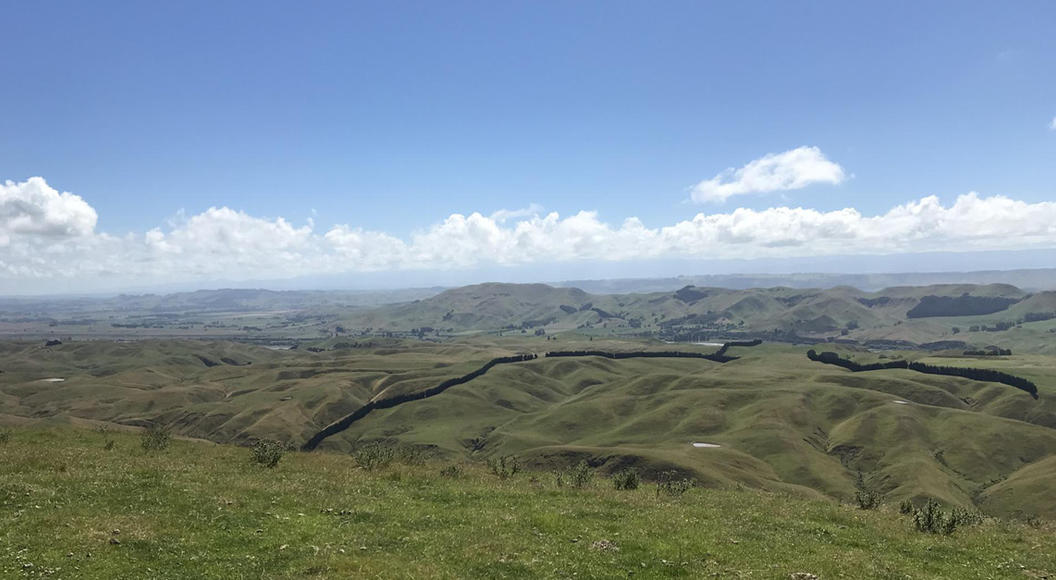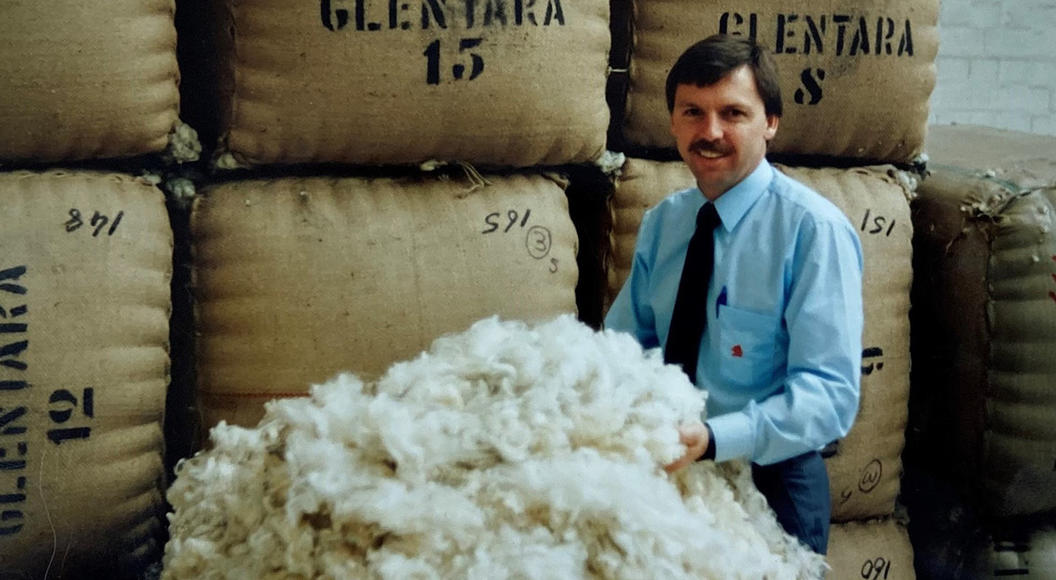
Wool News: Staff Profile - Kevin Waldron Building relationships is the key
Leaving school, which was in Oamaru, Kevin Waldron went straight into wool. Forty two years later, and the fibre has been his career ever since.
Kevin joined Wrightson NMA in July 1978 as a trainee wool classer, at first in the store. Times changed however, and with more wool classed in the shed, from 1982 Kevin became an independent wool classer, working farm to farm, building up a classing run of around 90,000 sheep per annum over 19 years. In the off-season Kevin was first a freezing worker, then a sorter at the wool scour; until a work accident in 2000 put an end to such a physical occupation.
In 2001 he joined Reid Farmers as a wool representative, a role he has held since, albeit several amalgamations led to the company evolving into PGG Wrightson.
Covering the Otago region, Kevin says the most important part of the job is ensuring his clients’ wool is well prepared at harvesting.
“We need to make sure the clip is prepared the best possible way, so it makes the best possible return for the grower. Wool preparation can change depending on different market demands. Recently the crossbred wool market has changed, with good coloured wools now earning a premium.
“Our job is to put wool through the selling system efficiently, with no hiccups. This requires good communication with both clients and woolstore staff,” he says.
Building relationships with farmers, shearers, shed hands and woolstore colleagues is the key to the job.
“Developing trust comes from honesty and efficiency. That is the most satisfactory part of the job.
“Otago’s weather produces the best wool in the country, especially crossbred wools. Our climate is not too humid or too wet, which gives our wool the best consistency of colour. However, our busiest time is pre-lamb shearing, which now starts in June, several weeks earlier than it was 20 years ago. Shearing when wet brings challenges. Shearing through pleasant winter weather, with frosty mornings, is fine. However, any wet weather makes it almost impossible to keep the wool clean. Drying wool is also a challenge around the shortest day and can seriously disrupt shearing patterns. Wet sheepyards can easily lead to mud and pen stain in the wool, and a downgraded clip,” says Kevin.
What Kevin reckons the wool sector most needs is increased demand, for strong wool in particular, though he has faith it will happen.
“Growers must be patient. Demand for wool will come again. In the meantime, don’t throw away genetics. When growers are tempted to diversify, they need to be careful. In Otago diversifying usually means putting up cattle numbers or dairy grazing. Farmers need to be ready to put more emphasis on wool for when the market rebounds,” he says.
Outside work Kevin enjoys sport, particularly rugby, cricket and golf.


